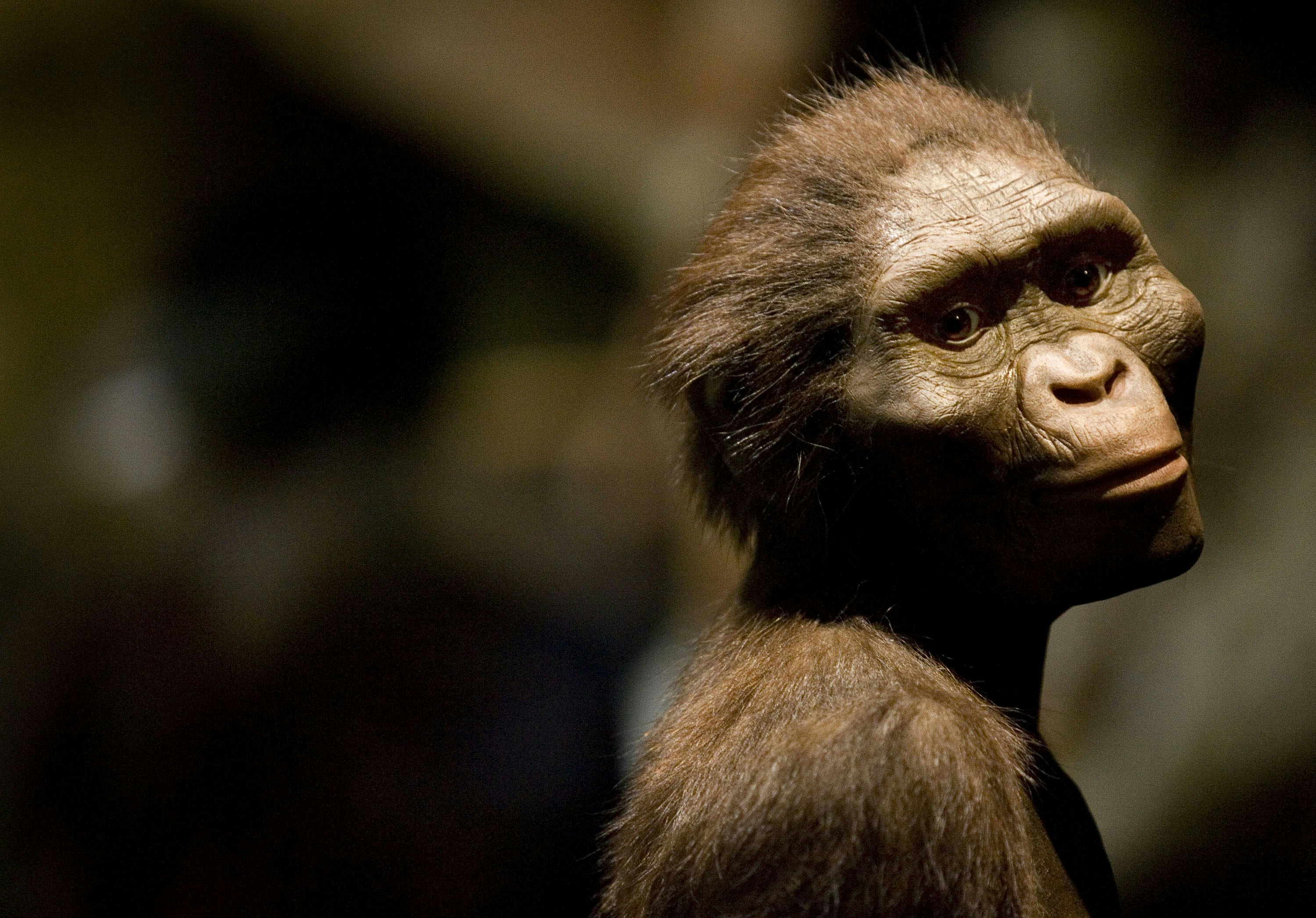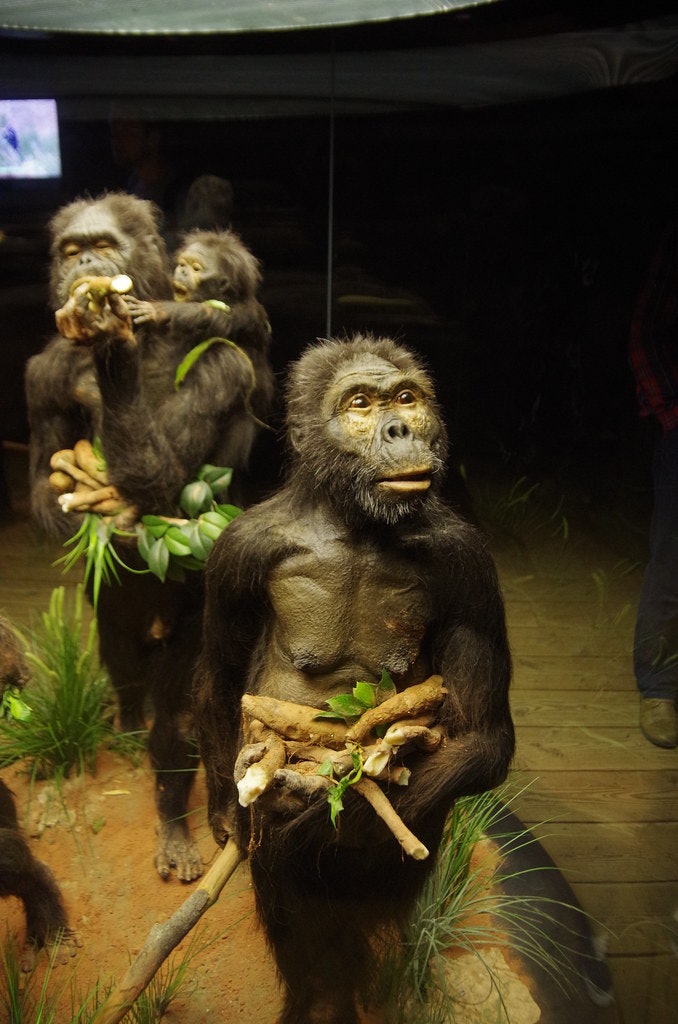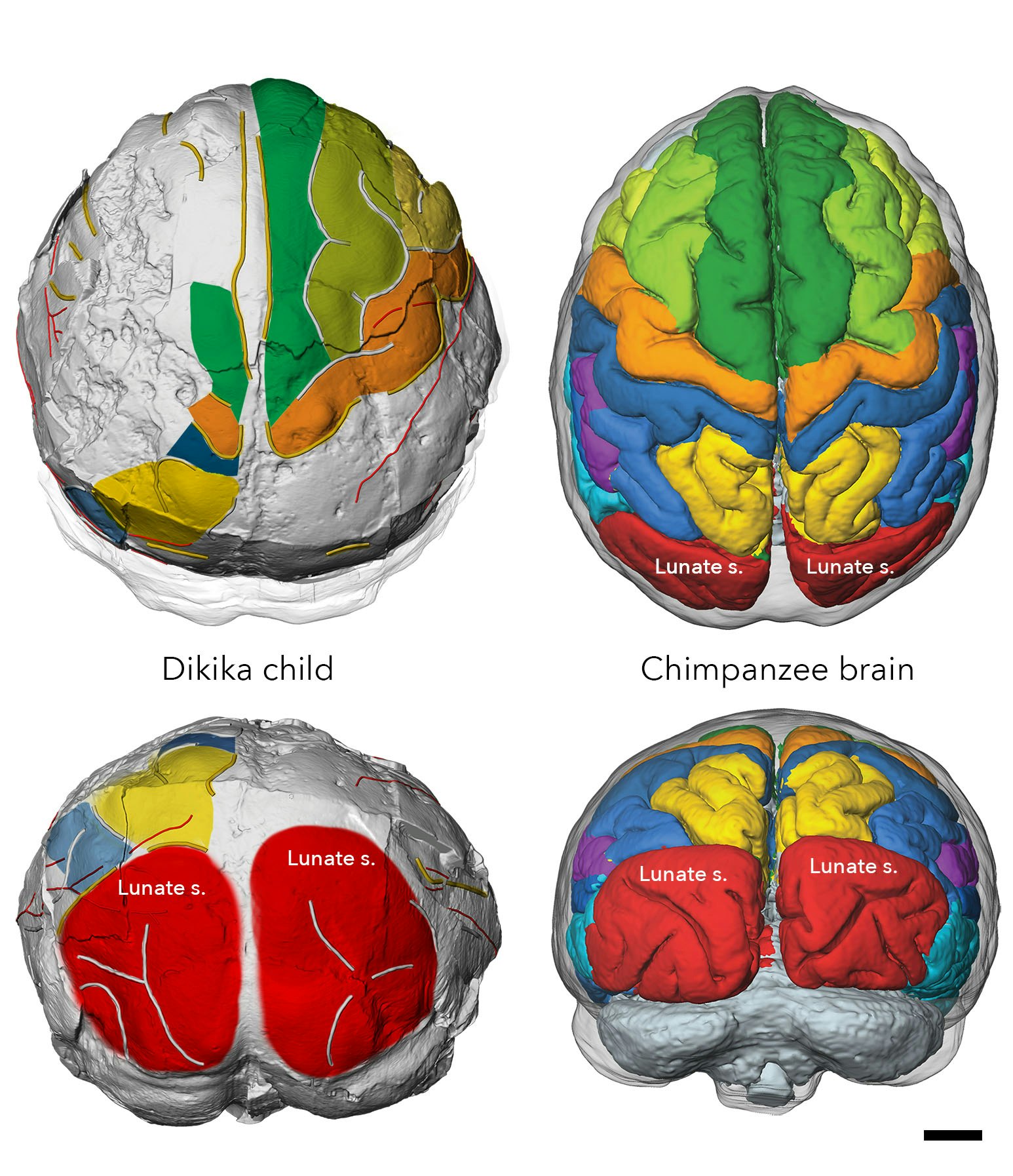
With long limbs and a big brain, the ancient hominin Australopithecus afarensis is among the most human-like of our potential ancestors. Exactly how A. afarensis combined human- and ape-like traits was revealed in incredible detail by the infamous Lucy, whom scientists now know spent time both walking on two legs and climbing trees.
But how Lucy and her kin grew up — and how different that might look to our own childhoods — has remained shrouded in mystery. Now, the use of modern-day brain scan technology reveals that Lucy’s family likely had a rather human-like childhood.
Scientists used CT scans to look at eight, 3-million-year-old, A. afarensis brains. The findings suggest that Lucy had a brain that bridged both ape and human features.
The brains appear to be organized similarly to those of apes, but, in contrast, they underwent a long period of childhood brain development, just like modern-day human children.
The findings suggest that spending a long time learning early in life may be one of the evolutionary factors behind humans’ big brains. Homo sapien brains are about three times larger than those of our closest living relatives, chimpanzees.
The findings appeared Wednesday in the journal Science Advances.
Forever young
The team of researchers used two types of CT scans to get an unprecedented, 3D view at the ancient crania.
They identified patterns in brain growth by looking at the imprints that each brain made on the inner base of the skull and mapping how they changed over the course of the individual's lifespan.
Already, the researchers knew that two of the specimens included in the study died as infants, one around three years old. By comparing the new scans against those estimates, the researchers were able to determine how much of the brain had grown by a given age, allowing them to pin down how the brains developed over time.
Having a lengthy childhood, it turns out, isn’t just a modern human phenomenon.
"As early as 3 million years ago, children had a long dependence on caregivers," said Zeresenay Alemseged, study co-author and a researcher at the University of Chicago, in a statement.

"That gave children more time to acquire cognitive and social skills. By understanding that childhood emerged 3.5 million years ago, we are establishing the timing for the advent of this milestone event in human evolution."
Same, same but different
Like us, A. afarensis walked upright — at least part of the time. It also had a brain 20 percent larger than that of chimpanzees. The species may have used stone tools, and had a slender build.
Those tendencies are all rather similar to modern humans, and by identifying Lucy’s long childhood development, the new study adds another commonality to the list.
But in terms of brain organization, Lucy was much more similar to modern-day chimpanzees.
A groove called the lunate sulcus separates the front and back of the brain in primates. In humans, that groove is placed further back, thanks to our large prefrontal cortex. In chimps, by contrast, it’s closer to the front of the brain.
In A. afarensis, the lunate sulcus is more aligned with chimpanzees, the study finds.
"This resolves a contentious argument that has polarized paleontologists for years," Alemseged said. "We can now say the organization of the brain was more ape-like."

This doesn’t necessarily mean Lucy acted like a chimpanzee. But a human-like brain organization may be a sign that Lucy could communicate like humans, or perform other complex behaviors. These results suggest that just wasn't the case for A. afarensis.
But representing a tapestry of both human and ape traits is what A. afarensis is all about. The new findings, Alemseged says, point to new evolutionary evidence of how we arrive at Homo sapiens are today.
"This fossil has played a pivotal role in allowing paleoanthropologists to ask and answer several major questions about how we became human," Alemseged said.
Abstract: Human brains are three times larger, are organized differently, and mature for a longer period of time than those of our closest living relatives, the chimpanzees. Together, these characteristics are important for human cognition and social behavior, but their evolutionary origins remain unclear. To study brain growth and organization in the hominin species Australopithecus afarensis more than 3 million years ago, we scanned eight fossil crania using conventional and synchrotron computed tomography. We inferred key features of brain organization from endocranial imprints and explored the pattern of brain growth by combining new endocranial volume estimates with narrow age at death estimates for two infants. Contrary to previous claims, sulcal imprints reveal an ape-like brain organization and no features derived toward humans. A comparison of infant to adult endocranial volumes indicates protracted brain growth in A. afarensis, likely critical for the evolution of a long period of childhood learning in hominins.







